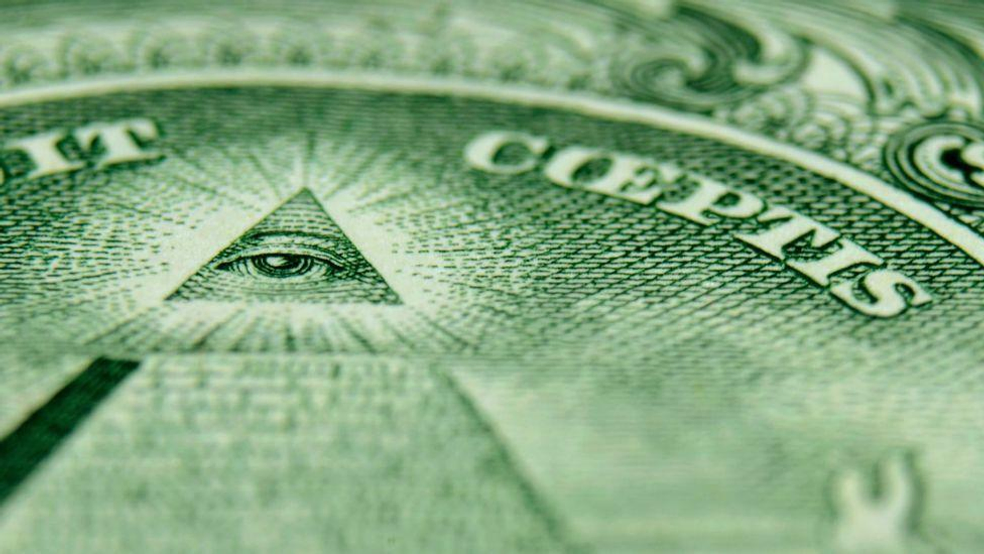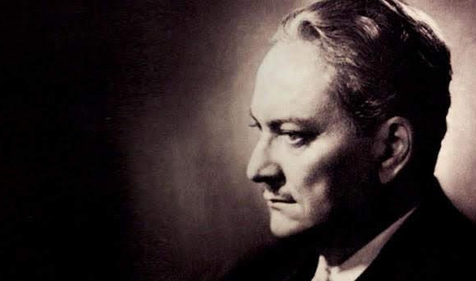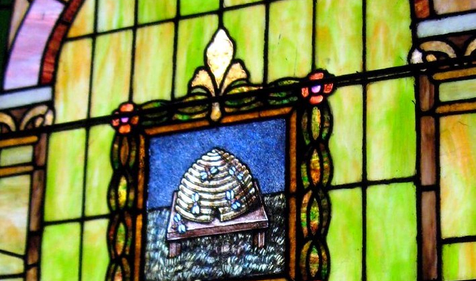This article explores the history of the Eye of Providence and explains its significance within Freemasonry.
As Freemasons, we’ve dedicated ourselves to a high moral standard. We’re devoted to serving our communities, refining our rough ashlars as we strive to become better men and push ever forward in an attempt to find greater light through our craft. Reminding us of our commitment is the Grand Architect’s Eye of Providence, the ancient symbol guiding our actions to be just, carried out with humility and love.
While the Eye has long been associated with Freemasonry, first with the publication in 1797 of Thomas Smith Webb's Freemasons Monitor, modern popular culture has led to a rise in conspiracy theories distorting its significance and past. Here we will examine this ancient emblem's rich history and detail its true meaning within the Masonic fraternity.
The Eye of Providence statue at St. Stephen Church in Belat, Turkey
Ancient Eyes
Long before the Eye of Providence watched over the first Masonic lodges of our ancestors, eyes were used by one of the world’s oldest religions. In Sumerians sculptures (4500 – 1900 BCE), eyes were enlarged to communicate the subjects’ holiness. These large eyes were meant to convey watchfulness and enlightened thinking. The ancient Egyptians used eyes in hieroglyphics in reference to the story of the god Horus, who in their mythology lost his eye in a battle. Later his eye was returned and healed, and the Egyptians subsequently began interpreting the eye as a symbol of healing, growth, and perseverance.
The Renaissance
The rise of the Eye of Providence in Western culture occurred during the Renaissance. European scholars and artists of this era were enraptured by ancient iconography, which led to attempted interpretations, many of which proved inaccurate. For example, in 1499, a romance by Francesco Colonna translated the Egyptian eye symbol into ‘God.’ The emblem quickly became an embodiment for God, as can be seen from the 1525 painting by Pontormo, Supper at Emmaus.

Later, in 1593, the Italian iconographer Cesare Ripa published a book of Egyptian, Greek, and Roman emblems entitled Iconologia. This book included elegant illustrations and written descriptions of ancient icons derived from oral history. Given the flourishing art and poetry of the age, Iconologia was a hit with the growing population of Europe’s enlightened thinkers and creators. It was invaluable in providing new symbols for them to reference and include in their works.
By the late Renaissance, the Eye frequently appeared in religious paintings, often depicted surrounded by rays of light contained within a triangle. This new version of the icon was chosen because the three sides of the triangle represented the three divine persons of the Holy Trinity. For the intellectuals and artists of this time, the Eye of Providence reflected the intellectual curiosity of the time and was a reminder to think critically and remain mindful of a higher entity. This period birthed the concept of the All-Seeing Eye as a symbol of God.
The Eye of the Architect
Given the prominence of the Eye of Providence in Renaissance art, it is reasonable to conclude why it was adopted into the iconography of early Freemasons. Historians have dated one of the earliest Masonic appearances of the Eye all the way back to the 17th century. The personal seal of Bro. Robert Moray, a Scottish soldier and philosopher, showed a circle with an eye at the center and rays radiating out from the center, just as in many earlier examples.
It’s unclear exactly when the symbol entered into Masonic ritual, but it had clearly been adopted by the mid-1700s. Two books by Bro. Fifield D’Assingy, An Impartial Answer to the Enemies of Freemasonry (1741) and A Serious and Impartial Inquiry Into the Cause of the Present Decay of Free-Masonry in the Kingdom of Ireland (1744) both include the Eye of Providence. The latter depiction appears to show Freemasons heading to lodge with the Eye watching over.
Over the course of the next century, the Eye became a much more prominent symbol within the fraternity. Notably, the great Masonic lecturer Bro. William Preston referenced the “all-seeing eye” of God in his writings. It was Thomas Webb, however, who brought The Eye of Providence to Freemasonry in the United States when he published The Freemason’s Monitor in 1797. It was hugely influential in the development of Masonic ritual across the country.
The Great Seal Debate
Today, conspiracy theories continue to permeate in the United States about the “true” meaning of the Eye as it appears in the Great Seal of the United States of America. In the Seal, the Eye of Providence sits atop a pyramid while rays of light shine out. Movies and other popular culture references to the Great Seal have obscured the true story of how the Seal’s design came to be and what the symbol means in this context. Some go so far as to suggest that the Seal is a Masonic emblem itself, and Freemasons have maintained some level of control over the government of the United States. Of course, this is not true, and The Eye of Providence was already increasingly recognizable by the time the Great Seal was designed in 1782.
The Great Seal was designed by Charles Thomson, Secretary of the Continental Congress, in collaboration with artist William Barton. Together they suggested the pyramid, a symbol of strength, to have 13 levels to represent the 13 states of America. The use of the Eye of Providence was consistent with other examples of the time: a reference to God’s oversight of the nation.
In Masonry Today
For Freemasons, the meaning behind the Eye of Providence remains similar to the early days of speculative Masonry. It’s a reminder of the Great Architect watching over us and that we must continue living up to the standards and ideals of our brotherhood and uphold our tenets of Brotherly Love, Relief, and Truth in all things.
Related Stories
Discover additional Scottish Rite blogs and news on this topic.
-
A Jolly Masonic Mug
History
Read More about A Jolly Masonic Mug
-
Manly P. Hall: Philosopher, Mystic, and Freemason
Famous Masons
Read More about Manly P. Hall: Philosopher, Mystic, and Freemason
-
What Does the Beehive Mean in Freemasonry?
Degrees
Read More about What Does the Beehive Mean in Freemasonry?



